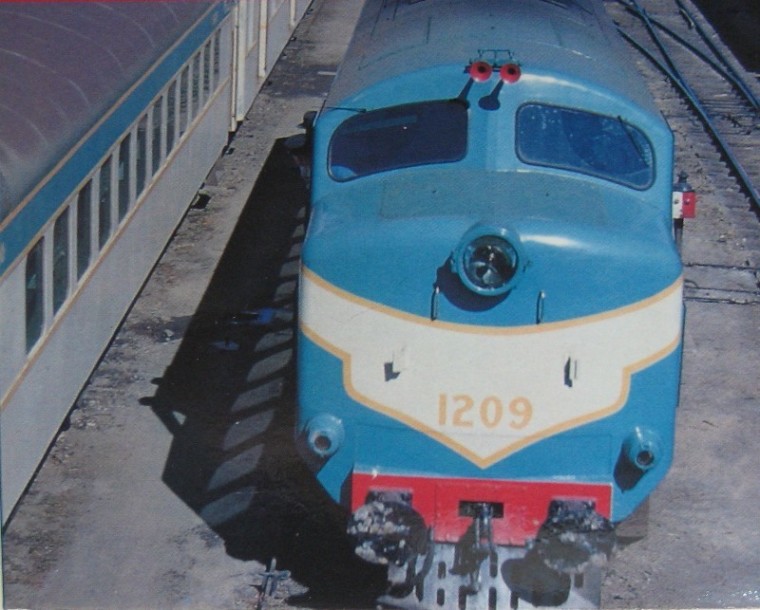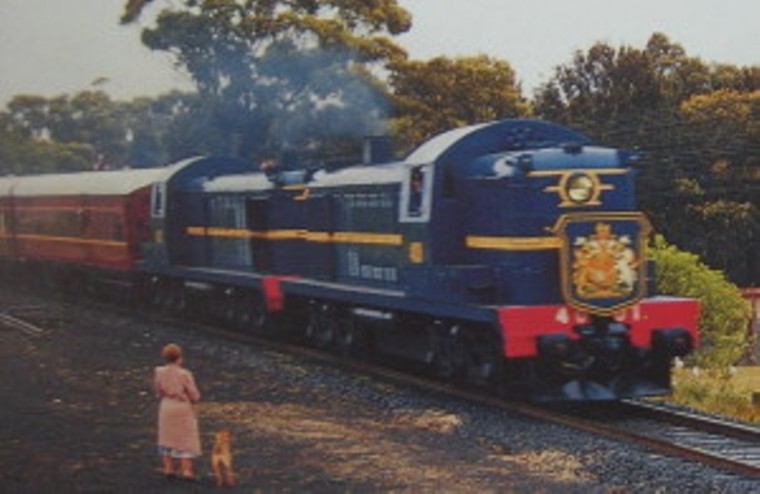
My Footplate Padre articles over these many years have touched on many aspects of railway working and life on the railways. Today it is how the brakes work on a train, the Westinghouse air brakes. First, consider how long it takes for a heavy laden train to stop, even with the emergency brake.
There is a phenomenal amount of inertia energy with a free wheeling train of say 1000 tons hurtling along, with a couple of big diesel locomotives engines powering along and this enormous where-with-all needs to be bought to a stand.
Even a cursory look-see by a passenger or a passer-bye will notice the first signal known as a “Distant Signal” leading towards a station area will several kilometres out from that said station area. This in itself might give a glue as to what might be such a purpose in having this rail signal so far away.
The reason is not a complicated one, although it is squarely a physics one. The weight of a train hurtling along at say 100 kph with say 1000 ton weight will need several kilometres to bring that train to a stand. It's speed and weight factors are such that a mechanism is required that will place a braking feature on each and every wagon distributed throughout the length of that train.
However, to bring that train under braking control is another factor entirely as there are “couplings” between each and every wagon which have a weight to braking point ration, that should for whatever reason the rear section of the train brake, and the front section hurtles on, that coupling's max load ratio will snap it in two.
In the day of steam this was much more likely on slow goods trains as the braking system on four wheeled wagons were not the best (as it were) and sometimes brakes would stick onto wagon wheels and not release, thus creating such 'snapping' situations.
In the Footplate Padre's 16 books of railways, which are tomes of engine driver's anecdotes, many a story details the activity of the locomotive fireman who was required to put together a tie rope in a certain way across the buffers of the two wagons so as to allow the train to proceed.
Then there were incident in the hours of darkness where it was difficult to see and the engine had stopped over a culvert and the fireman's last step off the locomotive wasn't upon the ground, rather a giant step, in effect, into mid air, with the fireman ending up in the drink, some meters below the culvert.
All this is railway lore. The more outrageous a story, the more likely it is to have occurred. There are endless stories about train braking and this leads me to draw your attention to when a fast passenger train hauled by a huge diesel comes into a station, you'll see and hear a brake-man tapping and checking the brake shoe mechanism of the under-carriage as the train slowly enters the platform environs.
The brake shoes
Every locomotive, carriage, good's wagon and freight container wagon has brake shoes and they can be found on every wheel from one end of the train to the other. These break shoes wear out like anything else and they need to be replaced as required and their life span depending on train running is surprisingly good.
The brake shoe mechanism itself is quite a simple engineering product, with a brake shoe attached to the brake arm (as it were) right up against each wheel, They are loose and miss the wheel spinning entirely unless the brakes are applied, and every brake arm along the entire length of the train comes down with huge force and attaches itself to the wheels, thus slowing down the train.
The locomotives up front, although perhaps well over 100 tons each, even with all that weight is not enough to slow a train or bring it to a halt. These brake shoes along the entire length of the train, pressure against the wheels and thus slow the train down.

The brake mechanism
The question as to how all this happens is a strange one and quite the opposite to what one might think. Take for example a push bike. There is a braking mechanism from the handle bars that you squeeze into the palm of your hand, the cables runs to the bike brake pads, and there is a direct restraint upon the push bike wheel.
A train's brake system works something opposite to that. Rather than the pressure like a cable being pressed upon the train wheels, there is a secondary mechanism between the locomotive driver and the train wheels. In effect, each rail wagon has a compressed air system operating and it's function is surprisingly unorthodox.
When the air is fully charged into the brake piston, the brakes are off. Isn't that strange. The engine's compressor has one main job, that is to keep the compressed air running a full bore to ensure the air is fully charged and therefore the brakes remain off. One might think the opposite, the air pressure would push the brake shoe onto the wheel. No, that is not how it works.
To apply the brakes therefore, the driver reduces the air pressure by 7lb of air, that is the first brake notch on the diesel's braked handle. That loss of 7lb of air in effect pushes the brake piston in – (not out) – the brake shoes are pressured onto the wheels the entire length of the train and evenly dispersed reduction of air pressure.
The next reduction is 15lb and that is powerful, that puts enormous pressure upon the brake shoes and really applies the application and likewise slows the train. The third reduction is the emergency. The entire air supply dissipates and those brake shoes clamp onto the wheels, often skidding the wheels such is the pressure.
Years of experience
It takes years of experience for locomotive crews to handle this braking mechanism, as each train will be quite different. There are no two trains alike. This reminds the Footplate Padre of us humans, none of us are exactly alike. Each person, even twins, develop at their own pace and respond to a whole range of different situations in various ways.
Yet it is Jesus, the Footplate Padre says, who speaks into the heart of every person whose spiritual needs retain that itch for something more than the physical. It is Jesus who offers us a peace that passeth understanding, even to Salvation.


Dr Mark Tronson - a 4 min video
Chairman – Well-Being Australia
Baptist Minister 45 years
- 1984 - Australian cricket team chaplain 17 years (Ret)
- 2001 - Life After Cricket (18 years Ret)
- 2009 - Olympic Ministry Medal – presented by Carl Lewis
- 2019 - The Gutenberg - (ARPA Christian Media premier award)
Gutenberg video - 2min 14sec
Married to Delma for 45 years with 4 children and 6 grand children